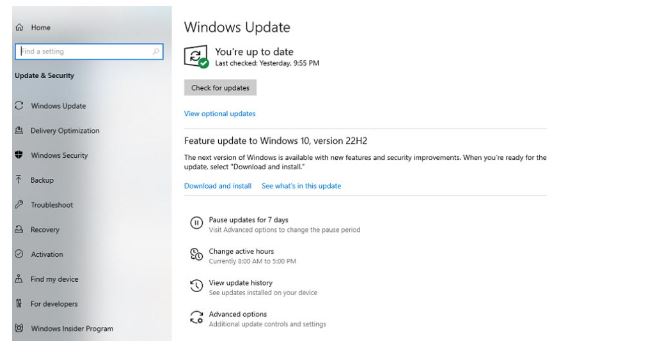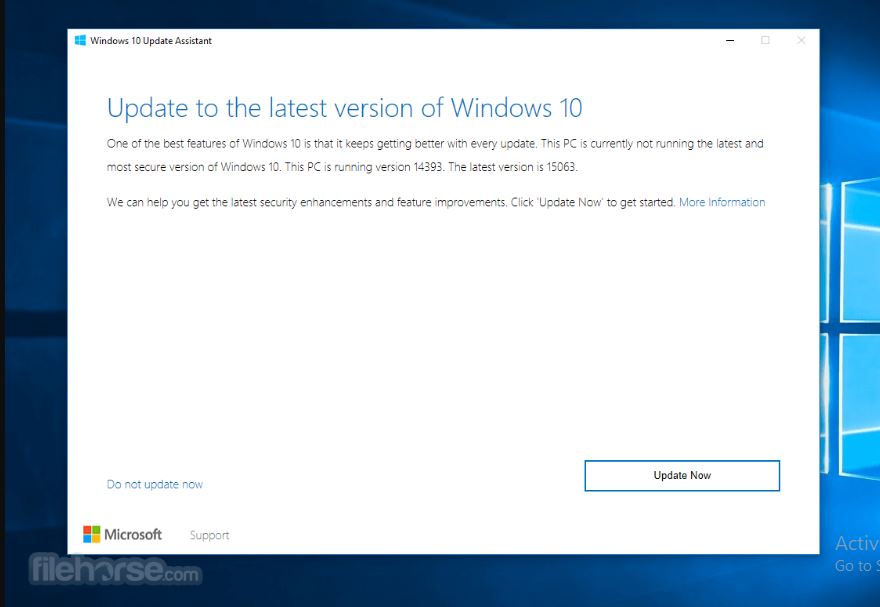From time to time, Windows offers updates to its users using the Windows 20 Assistant tool, and these updates include newer versions of the software that powers your computer. It helps you get these updates on time. However, most users have been complaining of slow Windows 20 upgrade assistants, hence your question, “Why is my Windows 20 upgrade assistant slow?
Your Windows 20 upgrade assistant is slow due to various factors, such as insufficient hardware resources, network limitations, software conflicts, background apps, or large amounts of data transferred during the update process.
Upgrading your Windows 20 assistant should be a seamless process, but sometimes you may observe some leggings in the process. We will delve into the reasons why your Windows 20 upgrade assistant is slow and what to do to avoid or increase the upgrade speed.

Is Windows 20 Upgrade Assistant necessary?
The Windows 20 upgrade assistant is very necessary because it helps you keep your computer system up-to-date. It alerts you to newer versions of security patches and software updates. Your Windows 20 upgrade assistant is also the only way to update Windows, like Windows 10 and 11.
Updating your Windows system is essential to the security of your computer. When your PC has been outdated for a long time, it becomes prone to malware software attacks and virus infestations.
The best way to stay ahead of these security breaches is to keep your Windows upgrade system on automatic. It will automatically upgrade to any newer version as soon as it becomes available.
You can also manually check your Windows 20 upgrade assistant for any upgrades and do the needful. It also gives you tips on how you can make your system better and run more efficiently. It will also warn you of any risks due to outdated security patches. All these advantages should tell you not to neglect your Windows upgrade assistant.
Why Is My Windows 20 Upgrade Assistant Slow?
Your Windows 20 upgrade assistant may be slow for several reasons, ranging from large data transfers to computer hardware and poor internet connections. Your Windows 20 upgrade assistant is slow for any of these reasons. There may be other reasons, like software conflicts and other reasons, so we will explain them in detail.
1. Hardware Limitations
Upgrading to a new operating system requires more system resources, and most computer hardware is not powerful enough to handle it. If your computer’s hardware is not powerful enough to facilitate the upgrade, you will experience lag.
Older and lower-end computers may have slow processors, insufficient RAM, or limited storage space. These hardware limitations can slow the upgrade very much.
2. Internet Speed
Windows Upgrade Assistant downloads necessary files from Microsoft servers during the upgrade process. If you have slow internet speed, then your upgrade will be slow and take longer. Most times, high latency, unstable connections, and limited bandwidth can also increase the slow nature of the download.
While making an upgrade, you must ensure that your internet network is very fast because it goes a long way toward determining your upgrade speed.
3. Network Congestion
Even with a good internet speed, network congestion can also occur and slow down your upgrade. There may be lots of people trying to access Microsoft servers at the same time to download the upgrade files. This simultaneous download can cause network congestion, which will, in turn, slow down your Windows 20 upgrade assistant and affect the overall upgrade speed.
4. Large Data Transfer
The Windows 20 upgrade assistant involves transferring a significant amount of data. These data include system files, configurations, and user data. This large data transfer can affect the overall upgrade time.
The larger the files involved, the slower your upgrade time will be. You can do nothing to reduce any slowness or lagging due to large data transfers. You will have to wait it out, but if your computer storage drive is almost full or fragmented, you may have to create space or fix the fragmented drive.
5. Software Conflicts
Sometimes software conflicts create an incompatibility between existing software and the new operating system. This incompatibility can create problems during the upgrade process and may result in slowness and lagging.
There are some system applications that require separate upgrades or uninstallations before you perform your Windows Upgrade Assistant upgrade. Uninstalling these programs will remove the incompatibility and increase your upgrade time.
6. Background Applications
There are lots of activities that run in the background of your computer. These activities consume your computer system’s resources and affect the upgrade speed. Before upgrading your Windows, closing all background apps and activities is best. This will free up resources for the upgrade process.
7. Antivirus And Security Software
Antivirus or Security Software: Sometimes, security software can slow down the upgrade process. The security software might be scanning files being downloaded or installed, which can cause delays.
8. Microsoft Server Load
During the initial release of a new operating system, Microsoft’s servers might experience heavy loads due to high demand. This surge in demand can lead to slower download speeds for users attempting to upgrade.
How Do I Speed Up My Window 20 Upgrade Assistant
You can speed up your Windows 20 upgrade assistant by avoiding the things that cause it to slow down in the first place. So, here are some general tips on how to speed up your Windows 20 upgrade assistant:
1. Check System Requirements
Check your system requirements necessary for the upgrade to ensure that your computer meets the minimum hardware requirements for the new version of Windows Upgrade Assistant. If your system does not meet the requirements, the upgrade process may be slower or not work at all.
If your computer hardware does not meet the requirements, consider getting a new computer or avoiding the upgrade.
2. Use A Faster Internet Connection
A faster and more stable internet connection can significantly speed up the download of upgrade files. Consider using a wired connection or connecting to a faster Wi-Fi network if possible.
3. Close Unnecessary Programs
Before starting the upgrade, close all unnecessary programs running in the background. This will free up system resources and potentially speed up the upgrade process.
4. Disable Security Software
Temporarily disable or turn off any antivirus or security software during the upgrade. Security software may slow down the download and installation of the upgrade files.
5. Clear Disk Space
Make sure you have enough free disk space on your system drive (usually the C drive) for the upgrade. Removing temporary files and unnecessary data can help create more space for the upgrade files.
6. Avoid Peak Hours
If you are downloading the upgrade from the internet, consider performing the upgrade during off-peak hours to avoid network congestion and potentially get faster download speeds.
7. Use Microsoft’s Official Tools
Make sure you use the official Microsoft tool if you use a Windows upgrade tool. Unofficial or third-party tools might not work as expected or could cause issues.
8. Stay Patient
Depending on your system’s hardware and internet speed, the upgrade process might take some time. Be patient and allow the upgrade to complete without interrupting it.
Always remember to back up your important data before starting any major system upgrade, just in case something unexpected happens.

What Will Happen If I Interrupt My Windows 20 Upgrade Assistant Update
Interrupting your Windows update can have a lot of consequences and negatively affect your computer. It can also affect the update you are installing. This effect can range from partial installation to corrupted system files, boot issues, data loss, failed updates, and inconsistent system states.
You can avoid these issues by allowing the update process to complete without interruption. If there are any hiccups during the update, be patient and allow the system to complete the process.
However, if you interrupted the update and are experiencing problems, consider running a troubleshooter and performing a system restore. If this persists, you can seek help from Microsoft support to resolve any issues your interruption has caused.
Frequently Asked Questions
Why Is My Windows 20 Upgrade Assistant Slow?
The download speed of the Windows 20 upgrade assistant depends on several factors, such as your internet connection speed, network congestion, and the size of the update files.
My computer meets the requirements for Windows 20, but the upgrade assistant is still slow. Why?
Despite meeting the hardware requirements, your assistant upgrade experience also depends on other factors, such as storage space and conflicting software. Check if you meet these parameters.
Is it normal for my Windows 20 upgrade assistant to get stuck at a certain percentage
Sometimes your upgrade gets stuck at a certain percentage, which is normal due to the large amount of data being processed. You have to be patient and allow the upgrade to continue.
Conclusion
Your Windows assistant upgrade is slow due to numerous factors, such as your internet speed, network congestion, hardware limitations, software conflicts, and data transfer requirements. You have to ensure that your computer meets all the requirements before you start the upgrade.
Your Windows 20 upgrade assistant is essential to getting update alerts and tips. It also protects your computer from malware and viruses. So, if you were wondering and asking the question, why is my Windows 20 upgrade assistant slow? This article has provided all the answers you need to know.
